FAQs
What exactly does a chartered physiotherapist do?
A chartered physiotherapist will treat injury and disease by correcting and improving the body’s own mechanism, without the use of drugs or medication.
What sort of treatments do chartered physiotherapists offer?
The modern chartered physiotherapist uses a wide range of skills including manipulation, acupuncture, mobilisation, massage and exercise, often aided by the use of sophisticated electronic and electrical equipment – all designed to help in relieving pain, restoring function and promoting healing.
Do I need to be referred for treatment by a doctor?
You may consult a chartered physiotherapist without a doctor’s referral, but contact will usually be maintained between your GP and the physiotherapist. Chartered physiotherapists work in close co-operation with GP’s in much the same way as consultants do, and this relationship is for the ultimate benefit to you the patient.
How long will the treatments last?
The initial consultation lasts 45 minutes and will consist of a thorough assessment and a treatment if time allows. The follow on treatments will take 30 minutes.
Do I need a chaperone?
You are welcome to bring a chaperone during the initial assessment and treatments if you wish. However, our team of physiotherapists includes both male and female therapists so you can specify your preference when making an appointment.
Will the assessment or treatment hurt?
It is important to wear comfortable clothing for your initial assessment to allow you to move freely to perform the movements the physiotherapist will need to observe.
What should I wear?
You may need to undress for parts of the assessment to enable the physiotherapist to see the area affected. For example, if you are coming with an ankle of knee problem it would be advisable to wear or bring shorts.
What if I need to see a Consultant?
The physiotherapist treating you will discuss with you if they feel it is appropriate for you to see a Physician or Surgeon. They will talk to you and review the reasons for and potential benefits of a specialist opinion. You may be referred to a specialist for further investigation (MRI scan / X ray)
Will the cost of physiotherapy be covered by my medical insurance?
Yes, all our team are Chartered Physiotherapists and registered with all of the major healthcare insurers. Please check with your insurance company before starting treatment, since they may need to authorise treatment prior to its commencement.
Is physiotherapy treatment appropriate for back and neck problems?
Our chartered physiotherapists are qualified to treat all spinal problems.
How do I know if my physiotherapist is fully qualified?
All chartered physiotherapists have undergone extensive training and have completed the necessary academic examinations in order for them to practice. Their names will be suffixed by MCSP and will be members of the Health Professions Council (HPC), which proves that they are state registered.
Free Back Pain Report
Chances are that if you are reading this you either have or have had back pain or neck pain. Back pain is not the sort of subject most people read about voluntarily and developing an understanding around back pain usually arises out of necessity rather than choice!
This guide is not intended as a scientific paper. Instead the goal here is to give you a simple overview of how your back works, how the discs in your spine function and what to do if you get a problem which is not resolving.
At InMotionClinics.com, we see patients with acute back pain as well as long term issues. We specialise in non-invasive spine treatment from simple advice to manual therapy.
You can be assured that we have seen a lot of back issues. We have the good sense to be able to apply appropriate strategies to help people get back on their feet and the wisdom to know when other clinicians are better placed to help.
So let’s get started with a very quick overview of how your spine works and then we can get to the meat of what to do about your pain!
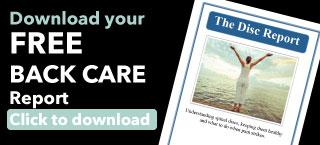
Please download this free Back Pain Report by clicking here..
Top athletes and early-onset arthritis
It’s tempting to think that osteoarthritis only affects people who are old and unfit – but that is not true.
“Everyone develops osteoarthritis eventually, as joints degenerate, but top athletes usually develop it far earlier than the rest of us,” says Mark Browes, sports physiotherapist.
The reason, he says, is that constant practice and play puts a greater load on joints such as the knee and hip than occurs in everyday life. Michael Owen, ex-Liverpool, Real Madrid, Manchester United and England star told Mark: “I played nearly 500 competitive games in my career and towards the end began to feel the effects. I had five operations and at 37 I’m aware of increasing joint pain and stiffness.”
Players of sports that involve regularly twisting and turning at the knee, such as football, cricket and rugby, are prone to injuries such as tearing the meniscal cartilage, which absorbs knee shock. Injuries and surgery increase the likelihood of developing early osteoarthritis.
Ben Kay, the ex-Leicester Tigers, England and British Lions second row, reported: “I had a couple of knee operations at the beginning of my career, and then a patella injury, ankle and back injuries. Like most of my playing colleagues I am now feeling significant pain and stiffness associated with chronic joint degeneration, a result of a career in high-level sport.”
Protecting players
Our Head of Physio, Mark Browes says: “You cannot legislate away the risk of trauma in sport, but you could restrict the number of games an individual plays – though players are under pressure from clubs, fans and (not least) themselves, to perform at a high level, and many simply accept the risks.”
Many clubs now carry out MRI scans regularly to check the condition of joints. “There is also a trend towards using collagen supplements to increase the depth of the articular cartilage, the tissue that helps joints to operate smoothly,” says Browes.
Protecting yourself
Simply giving up exercise will not protect your joints. “Exercises that build up muscle tissue help the muscles protect the joints, and physical activity encourages circulation of synovial fluid which helps them operate smoothly,” says Browes.
The key is to choose exercise that is appropriate to your age and physical condition.
Browes advises: “If pain stops you exercising, you end up limping, or the resultant pain means you cannot do the same exercise for the next few days, it is not appropriate. Don’t stop exercising altogether, but get advice about changing to another form of exercise.”
Safe lifting tips
One of the biggest causes of back injury at work is lifting or handling objects incorrectly.
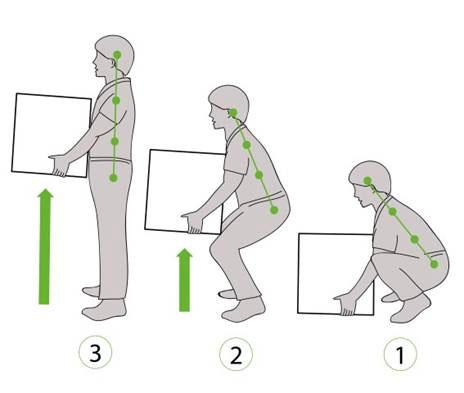
Learning and following the correct method for lifting and handling heavy loads can help prevent injury and avoid back pain.
Check out these safe lifting and handling tips, recommended by the Health and Safety Executive.
Think before you lift
Plan the lift. Where is the load going to be placed? Use appropriate handling aids where possible. Will help be needed with the load? Remove obstructions, such as discarded wrapping materials. For long lifts, such as from floor to shoulder height, consider resting the load mid-way on a table or bench to change your grip on it.
Keep the load close to the waist
Keep the load close to the waist for as long as possible while lifting to reduce the amount of pressure on the back. Keep the heaviest side of the load next to the body. If closely approaching the load isn’t possible, try to slide it towards the body before trying to lift it.
Adopt a stable position
Your feet should be apart with one leg slightly forward to maintain balance (alongside the load, if it’s on the ground). Be prepared to move your feet during the lift to maintain a stable posture. Wearing over-tight clothing or unsuitable footwear, such as high heels or flip flops, may make this difficult.
Ensure a good hold on the load
Where possible, hug the load close to the body. This should help you make a stronger and more solid lift than gripping the load tightly with the hands only.
Don’t bend your back when lifting
A slight bending of the back, hips and knees at the start of the lift is preferable to either fully flexing the back (stooping) or fully flexing the hips and knees – in other words, fully squatting.
Don’t bend the back any further while lifting
This can happen if the legs begin to straighten before starting to raise the load.
Don’t twist when you lift
Avoid twisting the back or leaning sideways, especially while the back is bent. Keep your shoulders level and facing the same direction as the hips. Turning by moving your feet is better than twisting and lifting at the same time.
Look ahead
Keep your head up when handling the load. Look ahead, not down at the load, once it has been held securely.
Move smoothly
Don’t jerk or snatch the load as this can make it harder to keep control and increases the risk of injury.
Know your limits
Don’t lift or handle more than you can easily manage. There’s a difference between what people can lift and what they can safely lift. If you’re in doubt, seek advice or get help.
Lower down, then adjust
Put the load down and then adjust. If you need to position the load precisely, put it down first, then slide it into the desired position.
Common posture mistakes and fixes Posted
Common posture mistakes and fixes Exercises and tips to help alleviate muscle tension caused by poor sitting and standing habits, such as:
If you have back pain, improving your posture is unlikely to address the root cause of your pain, but it may help alleviate muscle tension. “Correcting your posture may feel awkward at first because your body has become so used to sitting and standing in a particular way.” Says Mark Browes, Head of Physiotherapy at In Motion Clinics. “But with a bit of guidance, good posture will become second nature and be one step to helping your back in the long term.”
Slouching in a chair
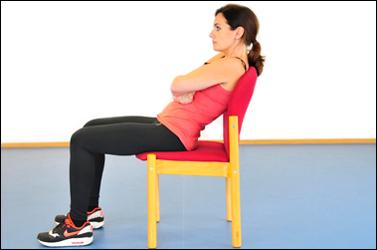
Slouching doesn’t always cause discomfort, but over time this position can place strain on already sensitised muscles and soft tissues. This strain may increase tension in the muscles, which may in turn cause pain.
Get into the habit of sitting correctly. It may not feel comfortable initially because your muscles have not been conditioned to support you in the correct position.
Exercises to strengthen your core and buttock muscles, and back extensions, will help correct a slouching posture.
Exercises to correct a slumping posture:
- Bridges
- Back extensions
- Plank
Sticking your bottom out sticking out bottom (left) and correct standing posture If your bottom tends to stick out or you have a pronounced curve in your lower back, you may have hyperlordosis. This is an exaggerated inward curve of the lower back that creates a “Donald Duck” posture. Wearing high heels, excessive weight around the stomach and pregnancy can all cause this posture. Core and buttock strengthening exercises, hip flexor and thigh stretches, and making a conscious effort to correct your standing posture are recommended to help correct a sticking out bottom. Exercises to correct a “Donald Duck” posture:
- Plank
- Side-lying leg raises
- Hip flexor stretches
- Standing thigh stretch
To help correct your standing posture, imagine a string attached to the top of your head pulling you upwards.
The idea is to keep your body in perfect alignment, maintaining the spine’s natural curvature, with your neck straight and shoulders parallel with the hips.
- Keep your shoulders back and relaxed
- Pull in your abdomen
- Keep your feet about hip distance apart
- Balance your weight evenly on both feet
- Try not to tilt your head forward, backwards or sideways
- Keep your legs straight, but knees relaxed
Standing with a flat back
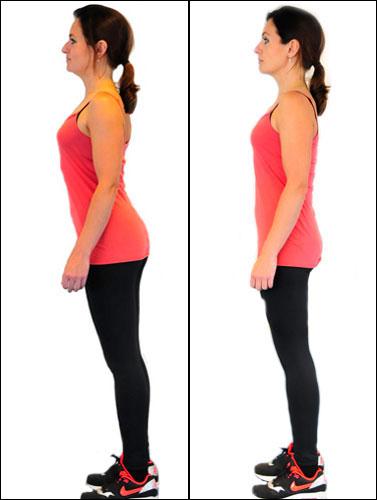
A flat back means your pelvis is tucked in and your lower back is straight instead of naturally curved, causing you to stoop forward. People with a flat back often find it difficult standing for long periods.
This posture is often caused by muscle imbalances, which encourage you to adopt such a position. Spending long periods sitting down can also contribute to a flat back. A flat back also tends to make you lean your neck and head forwards, which can cause neck and upper back strain.
Exercises to strengthen your core, buttocks, neck and rear shoulder muscles, and back extensions, are recommended to help correct a flat back.
Exercises to correct a flat back:
- Plank Side-lying leg raises
- Chest stretches
- Seated rows in a gym or pull-ups
- Back extensions
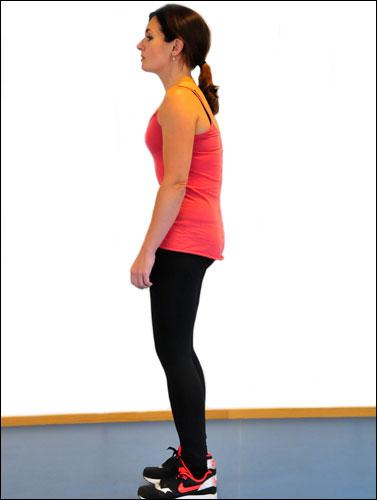
Leaning on one leg
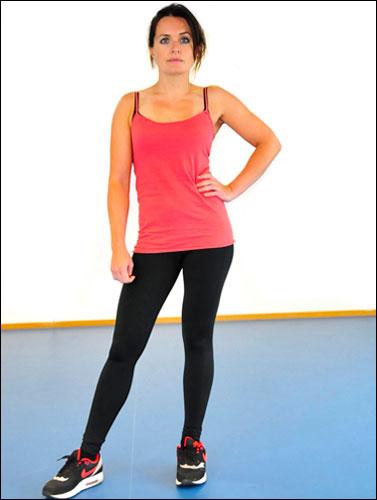
Leaning more on one leg while standing can feel comfortable, especially if you’ve been standing for a while. But instead of using your buttocks and core muscles to keep you upright, you place excessive pressure on one side of your lower back and hip. Over time, you may develop muscle imbalances around the pelvis area, which can cause muscular strain in the lower back and buttocks.
Other causes of uneven hips include carrying heavy backpacks on one shoulder, and mums carrying toddlers on one hip. To improve this posture, try to get into the habit of standing with your weight evenly distributed on both legs.
Exercises to strengthen your buttocks and core muscles will help correct uneven hips:
- Plank
- Side-lying leg raises
- Bridges
Hunched back and ‘text neck’
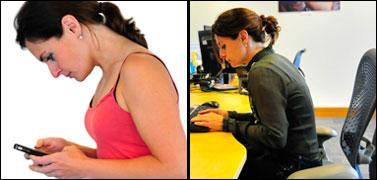
Text neck and hunched back Hunching over your keyboard is usually a sign that you have a tight chest and a weak upper back. Over time, this type of posture can contribute to you developing a rounded upper back, which can cause shoulder and upper back stiffness.
When hunching over a computer, your head may tend to lean forward, which can lead to poor posture. Using a mobile can cause similar problems dubbed “text neck”. Upper back, neck and rear shoulder strengthening exercises, chest stretches and neck posture drills are recommended to help correct a hunched back.
Exercises to correct a hunched back:
- Gently lengthen your neck upwards as you tuck in your chin
- Seated rows in a gym or pull-ups
- Chest stretches
Poking your chin
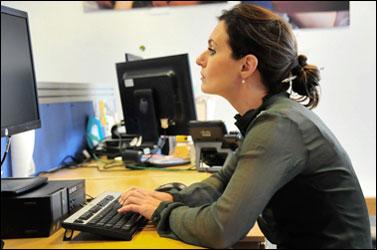
The poking chin posture can be caused by sitting too low, a screen set too high, a hunched back, or a combination of all three. Correcting a poking chin involves improving your sitting habits and exercises to correct your posture.
How to correct a poking chin: Gently lengthen your neck upwards as you tuck in your chin Bring your shoulder blades down and back towards your spine Pull in your lower tummy muscles to maintain a natural curve in your lower back Adjust your seating
Rounded shoulders
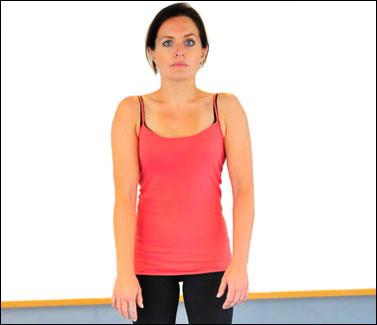
One way to tell if you’ve got rounded shoulders is to stand in front of a mirror and let your arms hang naturally by your sides. If your knuckles face forward, it may indicate that you have a tight chest and a weak upper back, giving the appearance of rounded shoulders.
Rounded shoulders are typically caused by poor posture habits, muscle imbalances and focusing too much on certain exercises, such as too much focus on chest strength while neglecting the upper back.
Exercises to strengthen your core, upper back and chest muscles will help correct rounded shoulders:
- Plank
- Bridges
- Seated rows in a gym or pull-ups
- Chest stretches
Cradling your phone

Holding your phone handset between your ear and shoulder places strain on the muscles of the neck, upper back and shoulders. The neck and shoulders are not designed to hold this position for any length of time.
Over time this posture can place strain on the muscles and other soft tissues, and lead to muscle imbalances between the left and right side of your neck. Try to get into the habit of holding the phone with your hand, or use a hands-free device.
Exercises for neck stiffness and pain:
- Chest stretches Neck stretches: gently lower your left ear towards your left shoulder.
- Hold for 10-15 deep breaths. Repeat on opposite side.
- Neck rotations: slowly turn your chin towards one shoulder.
- Hold for 10-15 deep breaths. Repeat on opposite side.
Top 10 tips for a healthy back
Top 10 tips for a healthy back, including lifting advice, how to sit properly and back-strengthening exercises.
1. Exercise your back regularly – walking, swimming (including front and back strokes) and using exercise bikes are all excellent ways to strengthen your back muscles.
2. Always bend your knees and hips, not your back.
3. Learn to lift heavy objects using the correct lifting technique.
4. Carry larger loads in a comfortable rucksack using both shoulder straps, and avoid sling bags.
5. Maintain a good posture – avoid slumping in your chair, hunching over a desk, or walking with your shoulders hunched.
6. Try to take a short break from sitting every 30 minutes.
7. Stop smoking – it’s thought smoking reduces the blood supply to the discs between the vertebrae, and this may lead to these discs degenerating.
8. Lose any excess weight. Use our healthy weight calculator to find out if you’re a healthy weight for your height.
9. Check that your bed provides the correct support and comfort for your weight and build, not just firmness.
10. Learn relaxation techniques such as this breathing exercise to help manage stress. Stress is a major cause of back pain.
Be fit for work
Employment plays a big part in keeping you healthy – just going out to work is good for you, both physically and mentally.
Many people spend a large proportion of their time at work. It’s common to feel too busy doing your job to take the time to consider how it impacts on your health.
Office workers particularly spend hours sitting still and carrying out repetitive tasks. The human body isn’t designed for this; we’re supposed to be moving around, so all this time spent at a desk needs to be well managed.
Common causes of sickness absence include musculoskeletal conditions such as lower back pain and ‘work-relevant upper limb disorders’ like Non Specific Arm Pain (NSAP). NSAP – often known as Repetitive Strain Injury – can cause discomfort in the arms, wrists, fingers, neck and shoulders.
Other problems include feeling pressurised, anxious and low in mood. These types of conditions are experienced by most adults from time to time. If identified early and managed well, they should not result in time off from work.
There are several steps you can take to ensure you incorporate enough physical activity into your day to help you stay fit and healthy for work. These include:
- Maintaining good posture
- Getting some fresh air every day
- Doing easy exercises every couple of hours
- Taking micro breaks
- Simple stretches
- Ensuring your work station is set up at the correct height
Physical activity will improve your health and fitness and bring many benefits to help you get the most from work and life
Knee exercises build elders’ confidence
Older people sometimes describe a fall as having been caused by their knee buckling, or giving way. New research shows that knee-buckling is linked with an increased risk of falls, especially among people who have knee pain or osteoarthritis.
Because knee buckling can be caused by muscle weakness and poor balance, researchers recommend a programme of targeted exercises to increase the joint’s stability and reduce its likelihood of giving way. Building knee stability also improves patients’ quality of life as they regain confidence in their balance.
Michael Nevitt and colleagues analysed data covering 1,842 people in the US Multicenter Osteoarthritis Study. The patients, aged 54 to 84 (average age 67) when the study started, were followed up five years later.
Those who, before the trial started, had already experienced a fall when their knee buckled were 4.5 times more likely than others to have had further falls in the next five years. They were twice as likely to have been significantly injured in a fall, three times as likely to have had their movement limited by a fall injury, and four times as likely to lack confidence in their balance.
‘Interventions that reduce knee buckling may help prevent falls, fall-related injuries and adverse psychological consequences of falls in persons with knee osteoarthritis,’ the authors conclude. They warn that, as the main symptom of knee arthritis is pain, professionals may miss signs of instability.
Injuries in Athletes
Do not overdo it
The amount of training you carry out plays a key role in determining your real injury risk. Studies have shown that your best direct injury predictor may be the amount of training you completed last month. Fatigued muscles do a poor job of protecting their associated connective tissues, increasing the risk of damage to bone, cartilage, tendons and ligaments.
If you are a runner, the link between training quantity and injury means that the total mileage is an excellent indicator of your injury risk. The more miles you accrue per week, the higher the chances of injury. One recent investigation found a marked upswing in injury risk above 40 miles of running per week.
The two best predictors of injury
If you have been injured before then you are much more likely to get hurt than an athlete who has been injury free. Regular exercises have a way of uncovering the weak areas of the body. If you have knees that are put under heavy stress, because of your unique biomechanics during exercises, your knees are likely to hurt when you engage in your sport for a prolonged time. After recovery, you re-establish your desired training load without modification to your biomechanics then your knees are likely to be injured again.
The second predictor of injury is probably the number of consecutive days of training you carry out each week. Scientific studies strongly suggest that reducing the number of consecutive days of training can lower the risk of injury. Recovery time reduces injury rates by giving muscles and connective tissues an opportunity to restore and repair themselves between work-outs.
Psychological factors
Some studies have shown that athletes who are aggressive, tense, and compulsive have a higher risk of injury than their relaxed peers do. Tension may make muscles and tendons tighter, increasing the risk that they will be harmed during workouts.
Weak muscles
Many injuries are caused by weak muscles which simply are not ready to handle the specific demands of your sport. This is why people who start a running program for the first time often do well for a few weeks but then as they add the mileage on, suddenly develop foot or ankle problems, hamstring soreness or perhaps lower back pain.
Their bodies simply are not strong enough to cope with the demands of the increased training load. For this reason, it is always wise to couple resistance training with regular training. Weak or inhibited gluteal muscles can be the cause of lower back and lower limb injuries.
Muscle Stiffness
Muscle stiffness refers to the ratio between the change in muscle resistance and the change in muscle length. Muscle stiffness is directly related to muscle injury risk and so it is important to reduce muscle stiffness as part of a warm up.
Research work by McNair (2000)[5] and Knudson (2001)[6] has indicated that only dynamic stretches – slow controlled movements through the full range of motion – decrease muscle stiffness. Static exercises did not decrease muscle stiffness.
This suggests that dynamic stretches are the most appropriate exercises for warming up and not static stretching exercises. Static stretches are perhaps more appropriate for the cool down as they help to relax the muscles and increase their range of movement.